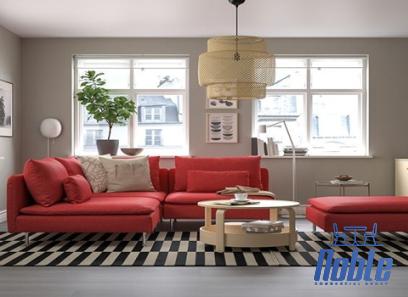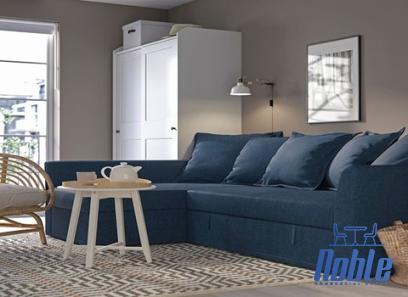This article is the complete guide to buying a replica panton plastic chair from nz and other places.
Plastics are the most widely used materials for manufacturing parts and end-use products, from consumer goods to pharmaceuticals. Plastics are a category of flexible materials with hundreds of polymer alternatives, each with unique mechanical properties. Plastic has also become a popular production material in the furniture industry.
For companies planning to invest in quality plastic chairs for consumers, a better understanding of the production process would be highly beneficial. This allows you to invest in the best way to meet your specific requirements. It also helps us choose the best manufacturers to work with. Plastic chairs are a great buy, especially when selecting high-quality, durable items.
This article contains an overview of the most common manufacturing steps for injection molded chairs and tips for choosing the best method.
What is a plastic chair?
Plastic chairs, commonly known as monobloc chairs, are made of thermoplastic polypropylene. These chairs are lightweight polypropylene chairs found in a variety of settings. Plastic chairs offer a cost-effective way to sit both at home and in business.
A plastic chair is made by first heating the pellets to about 220 degrees Celsius and then injecting the melt into a mold. Mold gates are often placed on the seat to provide fluid flow to all areas of the part.
Materials that are used in the manufacture of plastic chairs.
polyethylene
Polypropylene
Nylon
acrylic
PVC and uPVC
polyethylene
bakelite
Polypropylene
melamine
epoxy resin
Plastic chairs: a brief history
Let’s take a look at the history of these plastic chairs and see how plastic chairs have changed.
The year is 1940.
In 1946, Canada produced the first plastic ever designed. The chair featured a straightforward design that was strikingly contemporary. Monobloc chair is the name given to this chair.
60’s
Danish designer Verner Panton created the world-famous Panton chair in 1960 in a postmodern, space-age style. It was a huge success. In the same year, the Poly-COR chair appeared.
The following year saw the introduction of a new chair design, the Universal Chair. This is the first all-plastic chair to use injection molding technology to mold five separate pieces together.
The 2000s
The uniquely designed Poly Chair was a massive hit during the decade. This bulky short chair fits between a chair and a stool.
The Siamese chair of the 2010s is a recent addition to this era. A chair, as its name suggests, resembles two chairs joined at the waist. Since then, several additional chairs have been released. But when it comes to design and creative approach, these were groundbreaking. Most modern chair designs are both practical and aesthetically pleasing.
When the panton chair was created, it didn’t have many features. It features no armrests, a simple design with no armrests, four legs, and a mid-height backrest. The Panton chair has a smooth finish that gives it a sophisticated look. Despite its modest form, it was considered the pinnacle of comfort.
Plastic chairs are versatile and can be used for many different purposes. Side by side or stackable, transparent or colored for use in gardens or interior spaces, private or public. These chairs have many functions. As a result, it can be adapted to the space requirements.
The way that use of recyclable materials has resulted in a new type of modern and original chair. Satisfy all the environmental needs of society.
Advantages of using plastic chairs:
Indestructible: Furniture made from high-quality plastics such as PVC is indestructible.
It is not affected by environmental changes.
High tensile strength: It has the advantage of being difficult to break even when thrown from a high place.
It has no effect on termites. Unlike natural wood, plastic chairs are not affected by termites.
No Corrosion Does not rust like iron when exposed to air and moisture.
Weather resistance is one of the advantages of plastic chairs.
Versatility: Plastic chairs are available in a variety of colors, sizes, and designs.
Attractive Style Configuration – These chairs are available in different styles based on their comfort aspect.
cons
Durability: Plastic chairs are less durable than wooden furniture.
Regardless of their actual value, they look incredibly cheap and unattractive.
plastic chair designs
The type of plastic material that is used to make plastic chairs distinguishes them. There are two types of plastics on the market: thermoplastics and thermosets. PVC, polypropylene, acrylic, and polyethylene are examples of thermoplastics that can be softened with heat and molded (injection, vacuum, or blow molding). Thermosets are produced by heat, but once made, they are like concrete and do not change when reheated. Melamine (kitchen countertops), polyester, carbon fiber, and epoxy are some examples.
Some of the most popular versions of plastic chair styles
The Panton chair features an S-shaped back frame that merges into single wide support. This shape offers absolute comfort. Its spectacular and unique design is an actual work of art. These chairs come in different sizes and colors.
Spine Care Chairs are ergonomically designed chairs like no other. These chairs come in a variety of attractive colors and are perfect for work or study. Lumbar support is added to correct your posture.
Sun loungers – If you like to experiment with interior design, check this out. If you want to create a minimalist or marine atmosphere, a deckchair is a perfect choice. Otherwise, it could be a sophisticated addition to your backyard.
Prototype of a plastic chair
3D modeling services create models of furniture designs created by prototyping furniture. Then use rapid prototyping techniques to develop and test different design iterations. These concepts are quickly checked for flaws, tested, and adjusted in response to feedback.
At first, there may be several designs, but we will narrow it down according to appearance, company requests, and customer requests. Once the best method is selected, you can modify the concept as needed and send the final version to production.
For exemplary purposes, it is widespread to use an independent prototyping company to create furniture prototypes. This is an expeditious and efficient way to translate your furniture ideas into the manufacturing process. This approach excels not only in speed and accuracy but also in various other aspects.
Building a single piece of furniture can be expensive, and any adjustments require building another prototype to test and determine if the solution works. 3D models, on the other hand, can be easily modified. Changes to the 3D model are also inexpensive and require much less time to implement.










Your comment submitted.